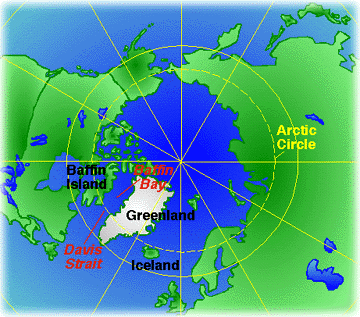
My tastes in music, film, and the arts have always been adventurous, but
that was always has always been in an comfortable environment close to
home. At the age of 33, I had never lived more than 60 miles from my
place
of birth. After teaching Earth and Environmental Science to 7th and 8th
graders at Dallas Public School's Environmental Science Academy, I was
ready for a change.
In 1997, I packed up my Ford truck and headed out to a new life. I went
from a metropolitan area of 3 to 4 million, to a fishing community of 800
in the Eastern Aleutians. I enjoyed the two years I spent in Sand Point,
Alaska teaching junior and senior high science classes. But after two
years on a small island, I was ready to see another part of Alaska, so I
left Sand Point for Nome.
I moved to Nome in August of 1999, to begin teaching at Anvil City Science
Academy, a charter school beginning its second year of operation.
A.C.S.A.
has an enrollment of 20 students ranging from the 5th to 8th grade. With
the help of my teacher's aide, Hank Irelan, the students have a unique
opportunity to take control of their own education. The program is
modeled
on Outward Bound's Expeditionary Learning model. With the exception of
math, we do not rely on any textbooks. The students are involved in
cross-curricular, hands-on learning. We are blessed with an abundance of
technology to aid us in the learning process. Even our physical education
program is unique. Through the tenants of Tae Kwon Do, students are
developing their physical and mental skills with the help of Hank
Irelan.
Over the past three years, I have made a concerted effort to develop my
teaching skills and knowledge to strengthen my ability to educate the kids
in my classes. In 1997, I attended the three-week Woodrow Wilson
Environmental Science Institute at Princeton University. Two years ago, I
parcticipated in the McCarthy-Kennicott Teachers Workshop at
Wrangell-St.Elias National Park, Project PHYSLab in Palo Alto, California,
and an environmental science workshop in Sitka, Alaska. Now, I have been
accepted to parcticipate in the TEA program. I am very excited to be
included, and can't wait to bring back new ways to interest my students in
science.
Visit Todd's homepage at: http://nanook.nomeschools.com/users/acsa/grant.html

Cold-water Phase of Healy Science Trials
Lisa Clough, East Carolina University
Larry Lawver, University of Texas at Austin, Institute for Geophysics
From June 9th to June 29th I will be on board the Coast Guard^Rs new
icebreaker, the USCGC Healy, off the coast of Greenland in Baffin Bay for
the final legs of the ice trials. The purpose of the two months of ice
trials has been to determine the capabilities of this newest scientific
research vessel. Legs three and four will be focused on testing the heavy
equipment associated with mooring and coring. Heading these investigations
will be Dr. Lisa Clough of Eastern Carolina University and Dr. Larry Lawver
of the University of Texas at Austin. Also joining me will be Jay Schauer,
a high school science teacher from Oregon.
During the mooring phase, we will be deploying biofilm racks. Biofilm
racks are composed of vertically aligned plexiglass discs suspended in the
water column. These discs are used to collect biofilm, layers of bacteria,
along with other zooplankton and phytoplankton, as well as larger organisms
such as mussels and barnacles. Biofilm discs can be used to examine the
biodiversity of the ecosystem it is deployed in. Included in the study of
biodiversity, water quality analysis will also be done. Temperature
readings, salinity and dissolved oxygen levels, and pH values will be
determined to evaluate water quality. Each of the factors influence water
quality and ultimately the biodiversity of the area.
Core samples from the ocean floor will be collected and examined during the
fourth and final leg. These core samples will be examined for their
geologic characteristics and to determine the types of organisms living in
the ocean sediment. I will also take part in standing watch, in which I
will be learning about navigation and surveying.
Throughout both legs of the trip, the collection of hourly meteorological
data will be done. The atmospheric information will be taken from the bow
tower. Air temperature, wind direction and speed, as well as other
statistics will be determined.

